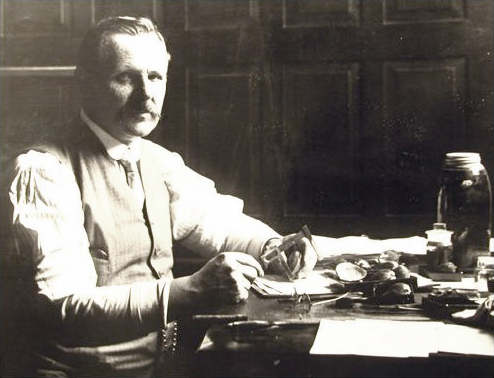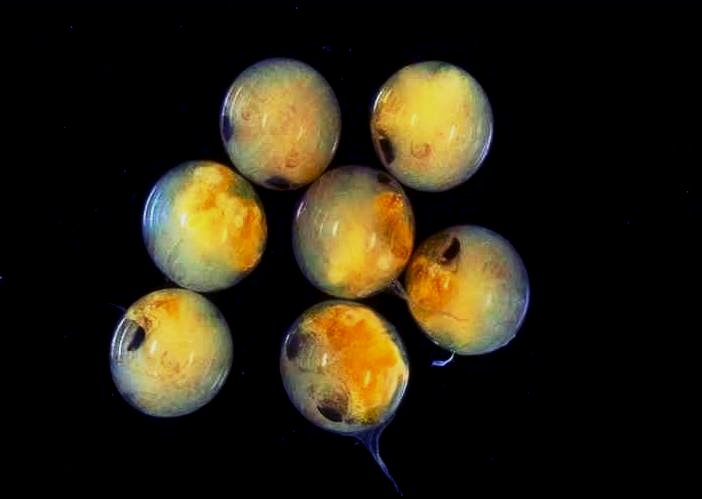|
Upogebia Africana
''Upogebia africana'' is a mud shrimp of the family Upogebiidae. It is endemic to the Atlantic and Indian Ocean coasts of southern Africa and occurs between Langebaan in South Africa and Inhambane Inhambane, also known as Terra de Boa Gente (''Land of Good People''), is a city located in southern Mozambique, lying on Inhambane Bay, 470 km northeast of Maputo. It is the capital of the Inhambane Province and according to the 2017 census ... in Mozambique. References Thalassinidea Crustaceans described in 1894 Crustaceans of the Atlantic Ocean Crustaceans of the Indian Ocean Crustaceans of South Africa Taxa named by Arnold Edward Ortmann {{decapod-stub ... [...More Info...] [...Related Items...] OR: [Wikipedia] [Google] [Baidu] |
Arnold Edward Ortmann
Arnold Edward Ortmann (April 8, 1863 – January 3, 1927) was a Prussian-born United States naturalist and zoologist who specialized in malacology. Biography Ortmann was born in Magdeburg, Prussia on April 8, 1863. A student of Ernst Haeckel, he graduated from the University of Jena in 1885 with a Ph.D.; he had also studied at the University of Kiel and the University of Strasbourg. From 1886 on, he worked as an instructor at the University of Strasbourg. Together with Haeckel, he participated in an expedition to Zanzibar in 1890/91. Three years later, he emigrated to the United States, where he got a post as the curator of the department of invertebrate paleontology at Princeton University. In 1899, he participated in the Peary Relief expedition, and one year later, he was naturalized as a U.S. citizen. In 1903, he moved to Pittsburgh. He became the curator of invertebrate zoology at the Carnegie Museum and from 1910 on, he was professor of physical geography at the Univers ... [...More Info...] [...Related Items...] OR: [Wikipedia] [Google] [Baidu] |
Thalassinidea
Thalassinidea is a former infraorder of decapod crustaceans that live in burrows in muddy bottoms of the world's oceans. In Australian English, the littoral thalassinidean ''Trypaea australiensis'' is referred to as the ''yabby'' (a term which also refers to freshwater crayfish of the genus ''Cherax''), frequently used as bait for estuarine fishing; elsewhere, however, they are poorly known, and as such have few vernacular names, "mud lobster" and "ghost shrimp" counting among them. The burrows made by thalassinideans are frequently preserved, and the fossil record of thalassinideans reaches back to the late Jurassic. The group was abandoned when it became clear that it represented two separate lineages, now both recognised as infraorders: Gebiidea and Axiidea. Recent molecular analyses have shown that thalassinideans are most closely related to Brachyura (crabs) and Anomura (hermit crabs and their allies). There are believed to be 556 extant species of thalassinideans in 96 gene ... [...More Info...] [...Related Items...] OR: [Wikipedia] [Google] [Baidu] |
Family (biology)
Family ( la, familia, plural ') is one of the eight major hierarchical taxonomic ranks in Linnaean taxonomy. It is classified between order and genus. A family may be divided into subfamilies, which are intermediate ranks between the ranks of family and genus. The official family names are Latin in origin; however, popular names are often used: for example, walnut trees and hickory trees belong to the family Juglandaceae, but that family is commonly referred to as the "walnut family". What belongs to a family—or if a described family should be recognized at all—are proposed and determined by practicing taxonomists. There are no hard rules for describing or recognizing a family, but in plants, they can be characterized on the basis of both vegetative and reproductive features of plant species. Taxonomists often take different positions about descriptions, and there may be no broad consensus across the scientific community for some time. The publishing of new data and opini ... [...More Info...] [...Related Items...] OR: [Wikipedia] [Google] [Baidu] |
Upogebiidae
Upogebiidae is a family of mud shrimp crustaceans belonging to the infraorder Gebiidea Gebiidea is an infraorder of decapod crustaceans. Gebiidea and Axiidea are divergent infraoders of the former infraorder Thalassinidea. These infraorders have converged ecologically and morphologically as burrowing forms.Dworschak, Peter C. ( ..., within the order Decapoda Genera *'' Acutigebia'' Sakai, 1982 *'' Aethogebia'' A. B. Williams, 1993 *'' Arabigebicula'' Sakai, 2006 *'' Austinogebia'' Ngoc-Ho, 2001 *'' Gebiacantha'' Ngoc-Ho, 1989 *'' Gebicula'' Alcock, 1901 *'' Mantisgebia'' Sakai, 2006 *'' Neogebicula'' Sakai, 1982 *'' Paragebicula'' Sakai, 2006 *'' Pomatogebia'' Williams & Ngoc-Ho, 1990 *'' Tuerkayogebia'' Sakai, 1982 *'' Upogebia'' Leach, 1814 *'' Wolffogebia'' Sakai, 1982 References * Thalassinidea Decapod families {{decapod-stub ... [...More Info...] [...Related Items...] OR: [Wikipedia] [Google] [Baidu] |
Endemic
Endemism is the state of a species being found in a single defined geographic location, such as an island, state, nation, country or other defined zone; organisms that are indigenous to a place are not endemic to it if they are also found elsewhere. For example, the Cape sugarbird is found exclusively in southwestern South Africa and is therefore said to be ''endemic'' to that particular part of the world. An endemic species can be also be referred to as an ''endemism'' or in scientific literature as an ''endemite''. For example '' Cytisus aeolicus'' is an endemite of the Italian flora. '' Adzharia renschi'' was once believed to be an endemite of the Caucasus, but it was later discovered to be a non-indigenous species from South America belonging to a different genus. The extreme opposite of an endemic species is one with a cosmopolitan distribution, having a global or widespread range. A rare alternative term for a species that is endemic is "precinctive", which applies to ... [...More Info...] [...Related Items...] OR: [Wikipedia] [Google] [Baidu] |
Langebaan
Langebaan is a town in the Western Cape province of South Africa on the eastern shore of Langebaan Lagoon. Langebaan is situated 120 km north of Cape Town, just off the R27, about 28 km from Vredenburg and 20 km from Saldanha Bay. The Lagoon stretches for 17 km from Saldanha Bay, past Langebaan to Geelbek in the South. In places it is up to 4 km wide. History The Langebaan Lagoon was formed by the rising and falling of sea levels during pre-historic times. This is unlike most lagoons which form where fresh water rivers enter the sea. As a result, Langebaan Lagoon is purely a salt water lagoon. As far back as 500 000 years ago, early Homo sapiens were probably present in the area, living in groups and hunting small game, displacing carnivores, such as lions, from their kills and gathering plant foods. They made fire as protection and for cooking and probably made simple shelters from branches. They used animal skins for warmth and clothing, and also made ... [...More Info...] [...Related Items...] OR: [Wikipedia] [Google] [Baidu] |
Inhambane
Inhambane, also known as Terra de Boa Gente (''Land of Good People''), is a city located in southern Mozambique, lying on Inhambane Bay, 470 km northeast of Maputo. It is the capital of the Inhambane Province and according to the 2017 census has a population of 79,724, growing from the 1997 census of 54,157. The settlement owes its existence to a deep inlet into which the small Mutamba River flows. Two protective sandy headlands protect the harbor and form a sandbank. The sister town of Maxixe is located across the bay of Inhambane. History Inhambane is one of the oldest settlements on Mozambique's eastern coast. Dhows traded here as early as the 11th century. Muslim and Persian traders were the first outsiders to arrive to the area by sea and traded pearls and ambergris, and they also traded at Chibuene in the south. The area became well known for its local cotton spinning and production by the Tonga tribe. Sometime before the Portuguese reached the area, the Karanga ha ... [...More Info...] [...Related Items...] OR: [Wikipedia] [Google] [Baidu] |
Crustaceans Described In 1894
Crustaceans (Crustacea, ) form a large, diverse arthropod taxon which includes such animals as decapods, seed shrimp, branchiopods, fish lice, krill, remipedes, isopods, barnacles, copepods, amphipods and mantis shrimp. The crustacean group can be treated as a subphylum under the clade Mandibulata. It is now well accepted that the hexapods emerged deep in the Crustacean group, with the completed group referred to as Pancrustacea. Some crustaceans (Remipedia, Cephalocarida, Branchiopoda) are more closely related to insects and the other hexapods than they are to certain other crustaceans. The 67,000 described species range in size from '' Stygotantulus stocki'' at , to the Japanese spider crab with a leg span of up to and a mass of . Like other arthropods, crustaceans have an exoskeleton, which they ecdysis, moult to grow. They are distinguished from other groups of arthropods, such as insects, Myriapoda, myriapods and Chelicerata, chelicerates, by the possession of biramous ( ... [...More Info...] [...Related Items...] OR: [Wikipedia] [Google] [Baidu] |
Crustaceans Of The Atlantic Ocean
Crustaceans (Crustacea, ) form a large, diverse arthropod taxon which includes such animals as decapods, seed shrimp, branchiopods, fish lice, krill, remipedes, isopods, barnacles, copepods, amphipods and mantis shrimp. The crustacean group can be treated as a subphylum under the clade Mandibulata. It is now well accepted that the hexapods emerged deep in the Crustacean group, with the completed group referred to as Pancrustacea. Some crustaceans (Remipedia, Cephalocarida, Branchiopoda) are more closely related to insects and the other hexapods than they are to certain other crustaceans. The 67,000 described species range in size from '' Stygotantulus stocki'' at , to the Japanese spider crab with a leg span of up to and a mass of . Like other arthropods, crustaceans have an exoskeleton, which they moult to grow. They are distinguished from other groups of arthropods, such as insects, myriapods and chelicerates, by the possession of biramous (two-parted) limbs, and by their ... [...More Info...] [...Related Items...] OR: [Wikipedia] [Google] [Baidu] |
Crustaceans Of The Indian Ocean
Crustaceans (Crustacea, ) form a large, diverse arthropod taxon which includes such animals as decapods, seed shrimp, branchiopods, fish lice, krill, remipedes, isopods, barnacles, copepods, amphipods and mantis shrimp. The crustacean group can be treated as a subphylum under the clade Mandibulata. It is now well accepted that the hexapods emerged deep in the Crustacean group, with the completed group referred to as Pancrustacea. Some crustaceans (Remipedia, Cephalocarida, Branchiopoda) are more closely related to insects and the other hexapods than they are to certain other crustaceans. The 67,000 described species range in size from '' Stygotantulus stocki'' at , to the Japanese spider crab with a leg span of up to and a mass of . Like other arthropods, crustaceans have an exoskeleton, which they moult to grow. They are distinguished from other groups of arthropods, such as insects, myriapods and chelicerates, by the possession of biramous (two-parted) limbs, and by their ... [...More Info...] [...Related Items...] OR: [Wikipedia] [Google] [Baidu] |
Crustaceans Of South Africa
Crustaceans (Crustacea, ) form a large, diverse arthropod taxon which includes such animals as decapods, seed shrimp, branchiopods, fish lice, krill, remipedes, isopods, barnacles, copepods, amphipods and mantis shrimp. The crustacean group can be treated as a subphylum under the clade Mandibulata. It is now well accepted that the hexapods emerged deep in the Crustacean group, with the completed group referred to as Pancrustacea. Some crustaceans ( Remipedia, Cephalocarida, Branchiopoda) are more closely related to insects and the other hexapods than they are to certain other crustaceans. The 67,000 described species range in size from '' Stygotantulus stocki'' at , to the Japanese spider crab with a leg span of up to and a mass of . Like other arthropods, crustaceans have an exoskeleton, which they moult to grow. They are distinguished from other groups of arthropods, such as insects, myriapods and chelicerates, by the possession of biramous (two-parted) limbs, and ... [...More Info...] [...Related Items...] OR: [Wikipedia] [Google] [Baidu] |

.jpg)




